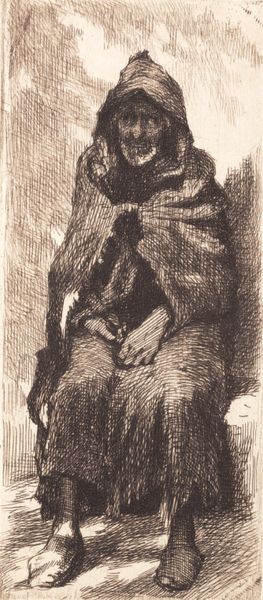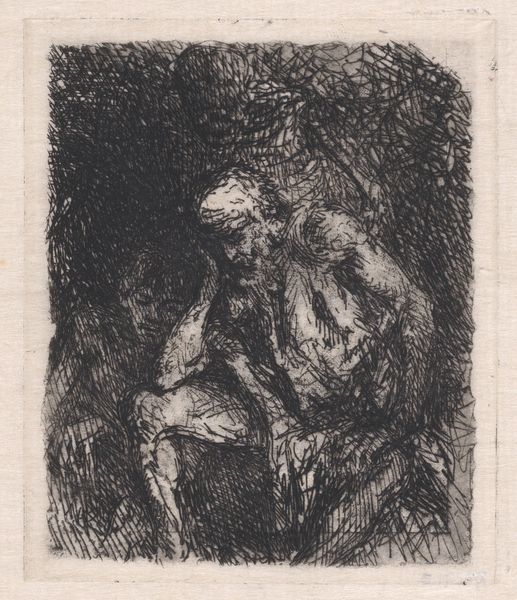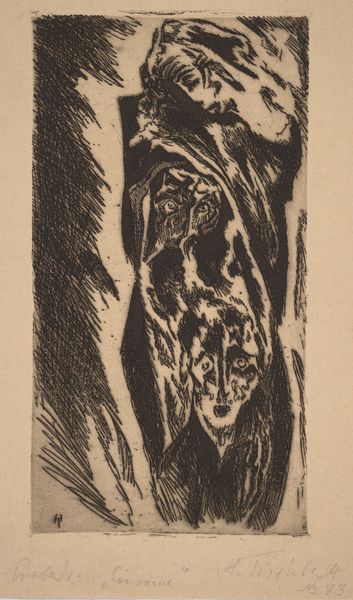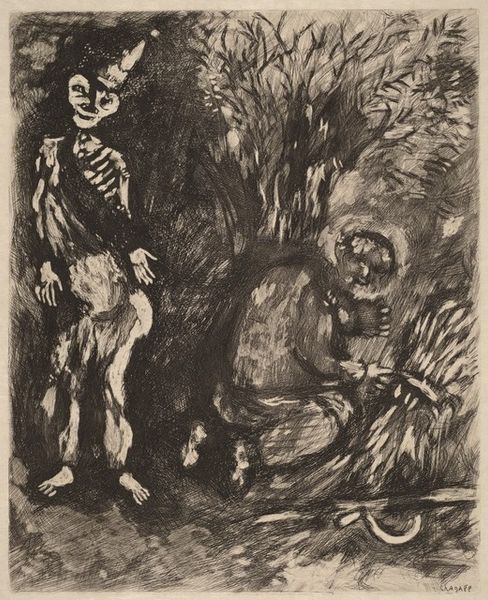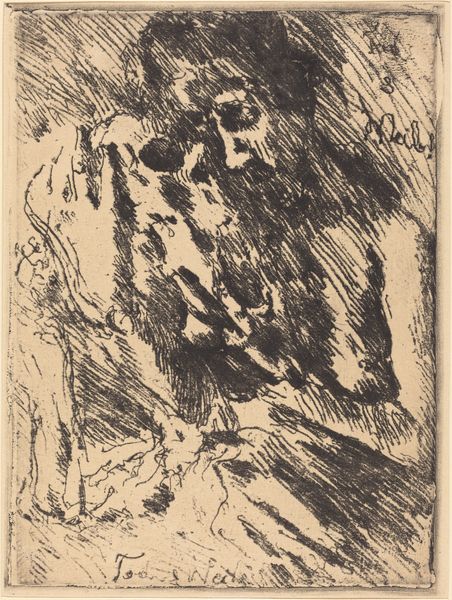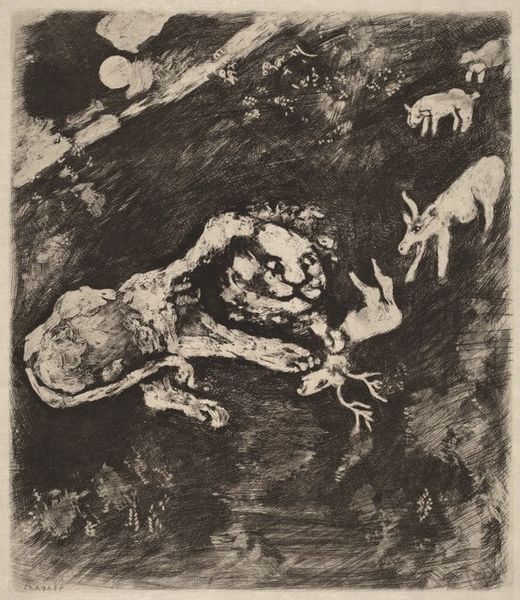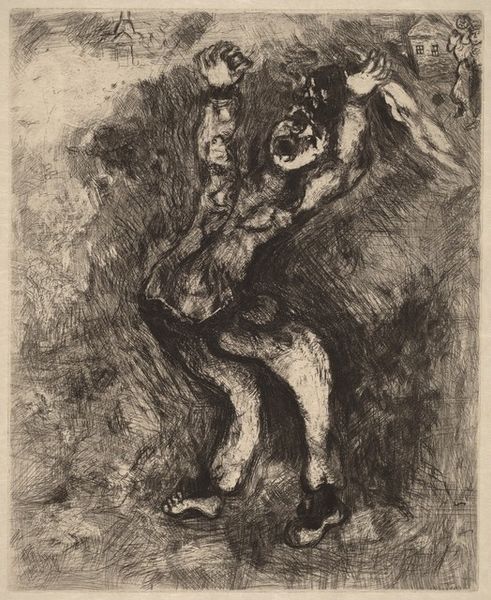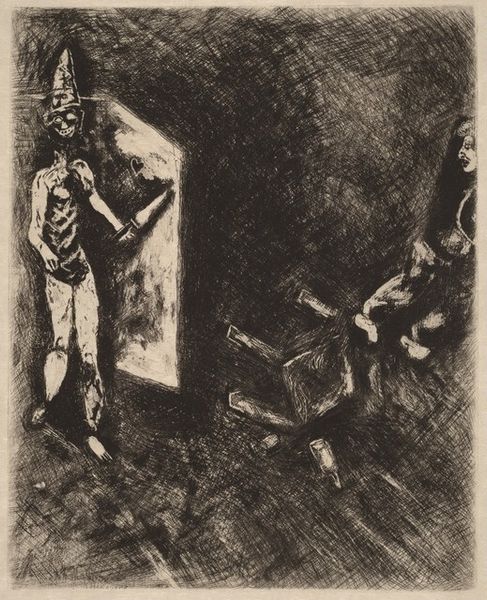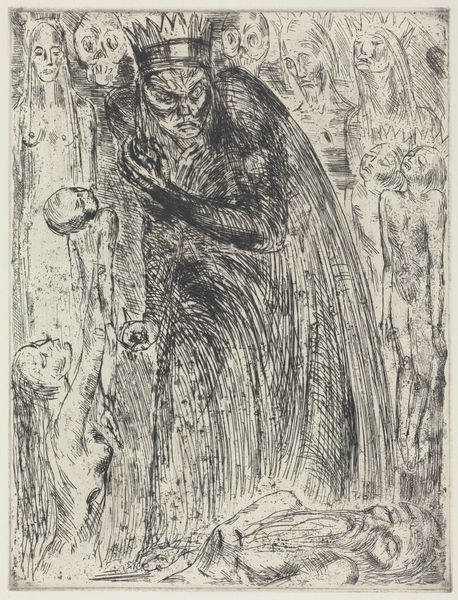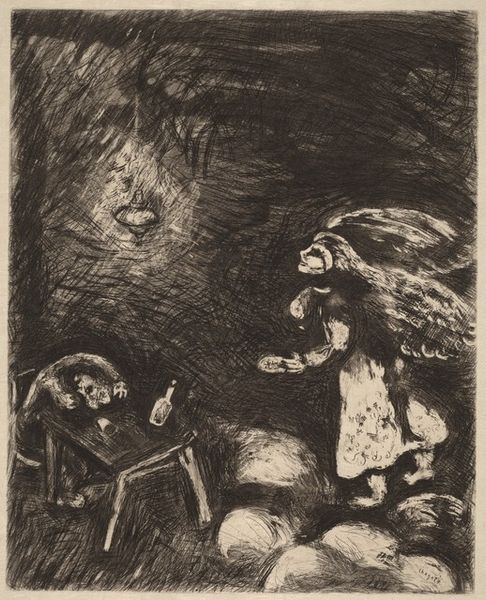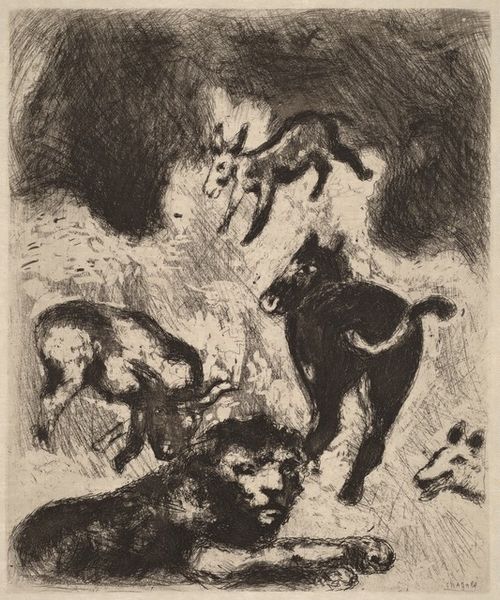
drawing, print, etching
#
drawing
#
allegory
# print
#
etching
#
figuration
#
momento-mori
#
line
#
symbolism
#
history-painting
#
academic-art
#
nude
Copyright: Public domain
Editor: Here we have Paul-Albert Besnard’s etching from 1900, "After the Visit". The skeletal figure is so stark against the implied forms in the background. It's…melancholy, I think. How would you interpret this piece? Curator: For me, it's critical to look at the processes and materials Besnard employed here. Etching allowed for mass production, making this image accessible. But who was the target audience? Consider the late 19th-century rise of industrial capitalism and its impact on society, perhaps prompting anxieties about mortality reflected in these images of skeletons and grief. Editor: So, the material process itself informed the subject? Curator: Precisely! The affordability of prints meant wider circulation of these memento mori. Etching wasn’t as prized as painting, blurring lines between high art and accessible design, influencing its potential meaning for viewers confronting rapid social and economic shifts. Notice the linear quality; think about its impact on the perceived emotional content, versus something painterly. Editor: It almost feels… clinical, because of the lines and the medium. And the way mass production diminishes something deeply personal like grief... Curator: What labour went into its making? How might repetitive production have influenced the artist’s own understanding, their relationship with mortality? This also challenges typical art hierarchies, doesn't it? Editor: Absolutely. I'd never considered that the means of production could be so intrinsic to interpreting its emotional core! Curator: Understanding materiality reveals art's deeper dialogue with its time. The work involved shifts our focus away from purely aesthetic judgements and illuminates production and labor.
Comments
No comments
Be the first to comment and join the conversation on the ultimate creative platform.

